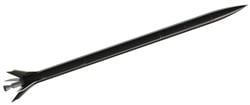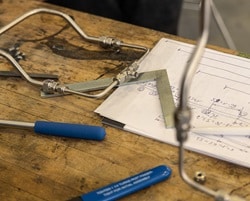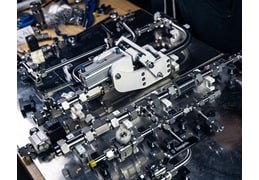TU Wien Space Team
TU Wien Space Team - From Vienna into Space
Founded 2010 by a few students from technical University in Wien, the TU Wien Space Team has the aim to design and engineer rockets, rocket engines, satellites and airplanes. Today, the team counts more than 200 active members, mainly students, but they are open for anybody who is interested in aerospace engineering.
Source: TU Wien Space Team
Project updates
we proudly announce that we support the TU Wien Space team in 2023 again and wish them good luck with all the running sub projects.
Hot-Fire Test on Franz, status June 2022
3 years of work for 8 seconds of pure adrenaline! At the beginning of June, the first hot-fire test was carried out with the GATE engine on Franz - with excellent success. This video speaks more than 1000 words:
---
µHoubolt liquid rocket, October 2022
Portugal October 2022 - successful launch: The Space Team left a lasting impression after they were the only team with liquid rocket that could actually launch. Congratulations to the team for this great milestone!
.ashx?la=de-de&h=250&w=200&hash=3A110C011CBA7D8C29C44AB368D0FF0A)
Impressions from the launch in Portugal (Source: TU Vienna Space Team)
---
History and Project overview
Challenging projects and big goals
In 2010, the team started with solid fuel rockets and over the years continuously improved them, so the "Space Team Rocket" (STR) is already in its 10th generation.
In addition the Space Team built "The Hound", a two stage solid fuel rocket currently in its 3rd generation. With "The Hound" they plan to reach an altitude of over 100km as a final goal and as an intermediate one, they aim to beat the european record of the highest altitude, which stands at 32.3 km.
It is worth mentioning that the Space Team also explores space near earth with CubeSats and the the atmosphere with aviation projects.
The tiny satellites - CubeSats - are developed to fly above earth and collect data with a specific experimental setup. "Pegasus" was brought to its orbit in 2017 and delivers data continuously since then. A second CubeSat project is currently under development, the "SpaceTeamSat1".
The projects "Deadalus" and "Across Austria" are the aviation projects, the first demonstrated an alternative recovery system to parachutes for atmospheric reentry and landing, whereas the latter will launch an autonomous flying drone and equip it with a hydrogen fueled propulsion system.
Rockets & Test stands
Back to rockets… with the gained knowledge from the previous years and the growing number of members, the team decided to tackle a new challenge: With the project team of "Houbolt", a liquid fueled rocket will be built to reach space (altitude: min. 100 km).
Rendering of Houbolt (Source: TU Wien Space Team)
This means for the team to not only build a new airframe, but a new propulsion system from scratch, with all its "surprises" and pitfalls. Therefore, the Space Team decided to keep the target (reaching space) in mind, but to begin with a rocket slightly smaller,"µHoubolt".
However, a new implication comes along with that, while the project progresses. For the moment, the "Houbolt"-team works with the test stand "TS-02", which can handle up to 500 N of thrust and is regularly used for tests on the µHoubolt engine. The current test stand "TS-02" will not withstand the planned thrust of the liquid fueled engine of "Houbolt" and does not fulfill the necessary safety requirements.
The test stand "TS03-24kN Franz" brings two important upgrades:
- it will be mounted on a trailer to be mobile (test runs have to be performed with larger safety zones, outside the city center)
- it withstand up to 24kN of thrust
This will enable the team to develop and test the “Houbolt” engine thoroughly.
A photo taken during a “hot fire” test run on the TS-02 test stand here in Vienna (Source: TU Wien Space Team)
The spaceteam is already familiar with the Swagelok system, having used it over the past years. It was a great pleasure to support them for their test stand "Franz", too. Besides training sessions for team members new to our products and systems, we are happy to send parts to the team in Vienna.
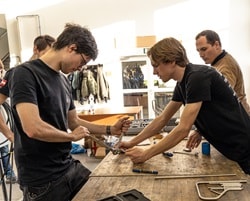
Impressions of the training session at the Space Team location in Vienna (February, 2020) (Source: TU Wien Space Team)
On different locations on the test stand, fluids - in liquid and in gas phase - are needed. Therefore, the Swagelok systemsolutions was extensively used, we supplied them with valves, tubes and the fittings for connecting the parts.
As can be seen in the sketch below, the test stand has a rather complex fluid feed system, all of its components are highlighted for better visibility.
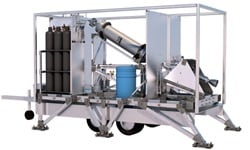
Renderings of the test stand Franz, from both sides. (Source: TU Wien Space Team)
A crucial role plays the fluid distribution boards on the test stand, the parts mounted are necessary to execute an engine test under a controlled and precise environment with spot on dosing for the engine. In the two images below the Space Team shares the moment after mounting the Swagelok parts and before placing the boards on the test stand.
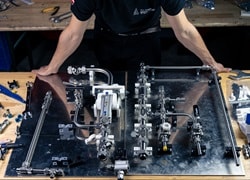
Images of the main supply board, realized with Swagelok parts, right before being mounted on the test stand "Franz". (Source: TU Wien Space Team)
Explore other areospace projects that Swagelok Austria and Switzerland support with our know-how, products and solutions:
- Aerospace Team Graz -10 km altitude flight with 3 meter rocket
- Swagelok covered in Hyperloop - Swissloop
- ARIS - Where visions and people grow
Do you have questions about the TU Vienna Space Team project or the Swagelok products used?
We look forward to hearing from you.
info@aa-solutions.at | Phone +43 2236 677079

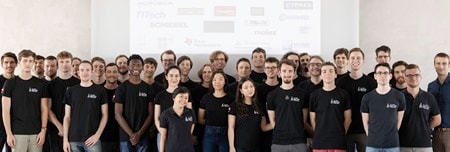

.ashx?la=de-de&h=250&w=200&hash=39634D2B68ADA229DF04465E7497FAEA)
